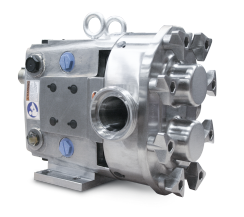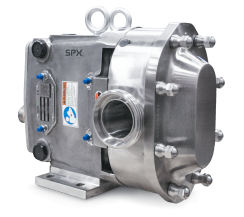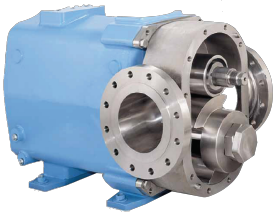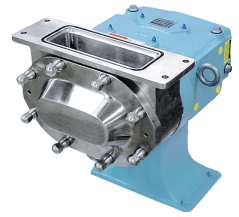How to maintain circumferential piston pumps
Circumferential piston pumps—also known as circumferential pumps or rotary lobe-style pumps—are precision-engineered positive displacement pumps used for hygienic, viscous, and shear-sensitive fluids.
Although they are robust and low-maintenance by design, regular inspection, lubrication, and correct alignment are essential to maintain efficiency, prevent wear, and ensure reliable long-term operation.
Routine Inspection and Performance Monitoring
Daily or Weekly Checks
-
Inspect for leaks around seals and casing joints.
-
Monitor for vibration or unusual noise—these can indicate rotor contact, misalignment, or bearing wear.
-
Check product temperature and discharge pressure for signs of excessive shear or restriction.
-
Visually inspect the pump head for residue or buildup that may affect performance, particularly in food or pharmaceutical processes.
Performance Indicators
-
A gradual drop in flow rate or increase in motor load may signal internal wear or incorrect rotor timing.
-
Consistent monitoring of energy consumption and output pressure helps identify early maintenance needs before failures occur.
Lubrication and Bearings
-
Timing gears (in the gearbox) require periodic oil checks and replacement per the manufacturer’s schedule—usually every 3,000–5,000 hours of operation.
-
Use the recommended gear oil grade and volume to ensure proper lubrication of timing gears and bearings.
-
For pumps operating in high-temperature or corrosive environments, verify that seals and lubrication materials are chemically compatible with the process fluid.
-
If the pump has grease-lubricated bearings, apply fresh lubricant at intervals recommended in the service manual. Avoid over-greasing.
Shaft Seals and Elastomers
-
Inspect mechanical seals or packing glands for leakage or wear. Replace seals if fluid or product is observed at the seal faces.
-
Regularly check O-rings and gaskets for cracks, hardening, or chemical degradation.
-
Always use OEM replacement seals and elastomers to maintain hygienic and pressure ratings.
-
For pumps in CIP/SIP systems, ensure seals are rated for the cleaning chemicals and temperatures used.
Rotor and Timing Gear Maintenance
-
The rotors (pistons) must be synchronized precisely via the timing gears so that they do not touch each other or the casing.
-
Check rotor clearances and timing alignment during annual maintenance or after any disassembly.
-
Excessive wear on the timing gears, shafts, or bearings can cause rotor contact, leading to product contamination or damage.
-
If rotors or shafts are replaced, always re-time the pump following manufacturer instructions before restarting.
Cleaning and Hygiene Maintenance
-
For food, beverage, and pharmaceutical use, ensure the pump is cleaned using CIP (Clean-in-Place) or SIP (Sterilize-in-Place) procedures where applicable.
-
Avoid prolonged dry running during cleaning cycles — these pumps rely on product or cleaning fluid for lubrication.
-
Disassemble and inspect internal surfaces periodically to confirm there is no residue, scale, or microbial buildup.
-
Maintain a record of cleaning cycles and inspections for traceability in hygienic applications.
Alignment and Drive System
-
Misalignment between the pump shaft and motor can cause vibration, seal wear, and bearing failure.
-
Check and correct alignment after installation, transportation, or any maintenance that involves coupling removal.
-
Inspect couplings for fatigue, wear, or cracking, and replace flexible elements as needed.
Storage and Standby Maintenance
When the pump is out of operation for extended periods:
-
Flush with a neutral, non-reactive cleaning fluid to remove product residue.
-
Drain and dry the pump to prevent corrosion or microbial growth.
-
Fill with a food-grade preservative oil if recommended for your application.
-
Rotate the shafts manually every few weeks to prevent sticking and maintain lubrication on internal surfaces.
Preventive Maintenance Schedule
| Frequency | Maintenance Task |
|---|---|
| Daily/Weekly | Inspect seals, check for leaks or vibration |
| Monthly | Check oil level and lubrication system |
| Quarterly | Inspect couplings, alignment, and bearing temperature |
| Annually | Verify rotor clearances, re-time gears, replace worn seals and bearings |
Following a preventive maintenance plan minimizes unplanned downtime and extends the service life of the pump.
|
|






